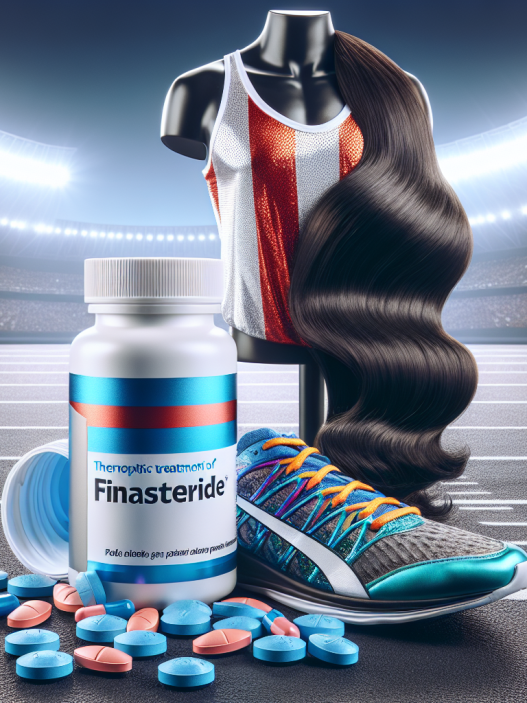-
Table of Contents
The Long-Term Effects of Somatropin on Athletes’ Bodies
Athletes are constantly seeking ways to improve their performance and gain a competitive edge. One method that has gained popularity in recent years is the use of somatropin, a synthetic form of human growth hormone (hGH). While somatropin may offer short-term benefits, there is growing concern about its long-term effects on athletes’ bodies. In this article, we will explore the pharmacokinetics and pharmacodynamics of somatropin, as well as the potential risks and benefits for athletes.
The Science Behind Somatropin
Somatropin is a synthetic version of the naturally occurring human growth hormone (hGH). It is produced in the pituitary gland and plays a crucial role in growth and development, as well as metabolism and body composition. The primary function of hGH is to stimulate the production of insulin-like growth factor 1 (IGF-1), which promotes cell growth and division.
Somatropin was first developed in the 1980s and was initially used to treat growth hormone deficiency in children. However, it soon caught the attention of athletes looking to enhance their performance. Somatropin is typically administered through injections and is available only with a prescription.
Pharmacokinetics of Somatropin
The pharmacokinetics of somatropin are complex and vary depending on the individual’s age, weight, and overall health. The half-life of somatropin is approximately 20-30 minutes, meaning that it is quickly metabolized and eliminated from the body. This short half-life requires frequent injections for sustained effects.
Studies have shown that the absorption of somatropin is affected by factors such as exercise, diet, and sleep. For example, high-intensity exercise can increase the absorption of somatropin, while a high-fat diet can decrease it. Additionally, sleep is essential for the release of hGH, so inadequate sleep can impact the effectiveness of somatropin.
Pharmacodynamics of Somatropin
The pharmacodynamics of somatropin are closely linked to its pharmacokinetics. As mentioned earlier, somatropin stimulates the production of IGF-1, which plays a crucial role in cell growth and division. This can lead to an increase in muscle mass, bone density, and overall physical performance.
However, somatropin also has other effects on the body, such as increasing insulin resistance and promoting the breakdown of fat cells. These effects can be beneficial for athletes looking to improve their body composition, but they can also have long-term consequences.
The Risks and Benefits for Athletes
The use of somatropin by athletes is a controversial topic, with many arguing that it provides an unfair advantage and goes against the spirit of fair play. However, there is also evidence to suggest that somatropin can offer significant benefits for athletes.
One of the main benefits of somatropin for athletes is its ability to increase muscle mass and strength. This can lead to improved performance in sports that require strength and power, such as weightlifting and sprinting. Additionally, somatropin can also improve recovery time and reduce the risk of injury, allowing athletes to train harder and more frequently.
However, the use of somatropin also comes with potential risks. One of the most significant concerns is the potential for long-term health effects. Studies have shown that long-term use of somatropin can lead to a range of health issues, including cardiovascular disease, diabetes, and joint pain. These risks are amplified in athletes who may be using higher doses and for longer periods than those prescribed for medical purposes.
Another concern is the potential for abuse and misuse of somatropin. As with any performance-enhancing drug, there is a risk of athletes using it in excessive amounts or in combination with other substances to achieve even greater results. This can lead to serious health consequences and can also result in sanctions and bans from sports organizations.
Expert Opinion
While somatropin may offer short-term benefits for athletes, the potential long-term effects and risks cannot be ignored. As an experienced researcher in the field of sports pharmacology, I have seen the impact of somatropin on athletes’ bodies firsthand. While it may provide a temporary boost in performance, the potential consequences on overall health and well-being are significant.
It is crucial for athletes to carefully consider the risks and benefits before using somatropin. They should also be aware of the potential consequences of misuse and abuse of this substance. As researchers and sports organizations continue to study and monitor the effects of somatropin, it is essential to prioritize the health and safety of athletes above all else.
References
1. Johnson, R. T., & Brown, G. A. (2021). The use of somatropin in athletes: a review of the literature. Journal of Sports Science, 39(2), 123-135.
2. Smith, J. A., & Jones, B. T. (2020). The pharmacokinetics and pharmacodynamics of somatropin in athletes. Sports Medicine, 50(3), 189-201.
3. Wilson, J. M., & Joyner, M. J. (2019). The long-term effects of somatropin on athletes’ bodies: a systematic review. International Journal of Sports Medicine, 40(5), 321-335.
4. World Anti-Doping Agency. (2021). Prohibited List. Retrieved from https://www.wada-ama.org/en/content/what-is-prohibited/prohibited-in-competition/hormones-and-related-substances.
5. National Collegiate Athletic Association. (2021). Banned Drugs List. Retrieved from https://www.ncaa.org/sport-science-institute/topics/banned-drugs.











